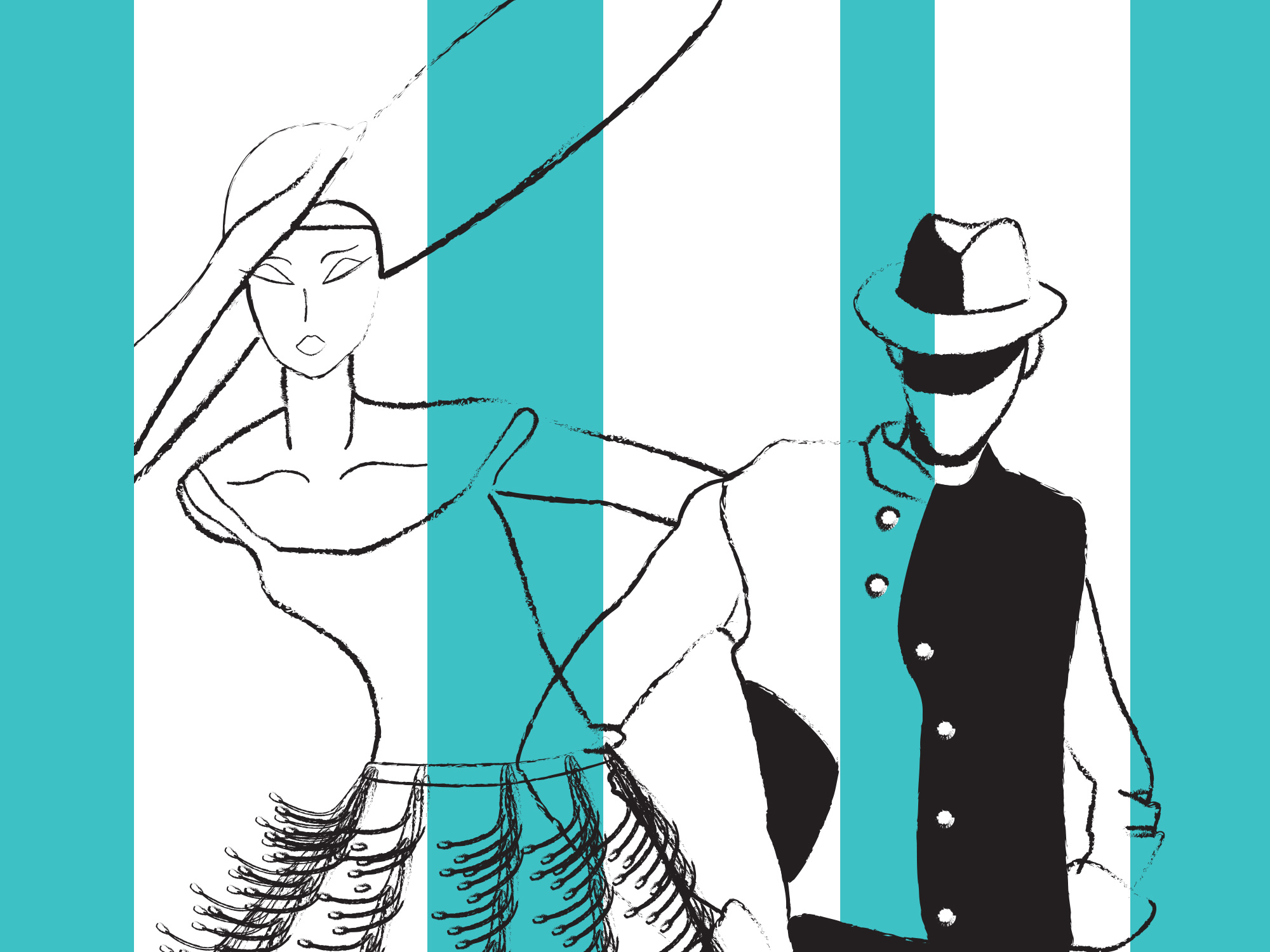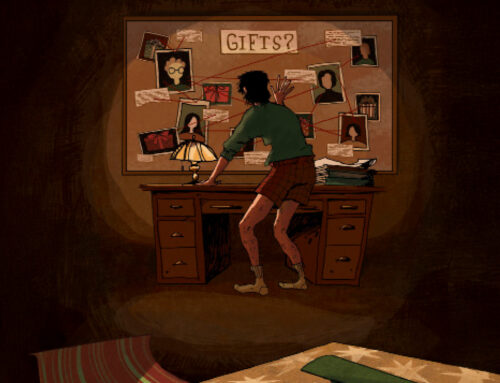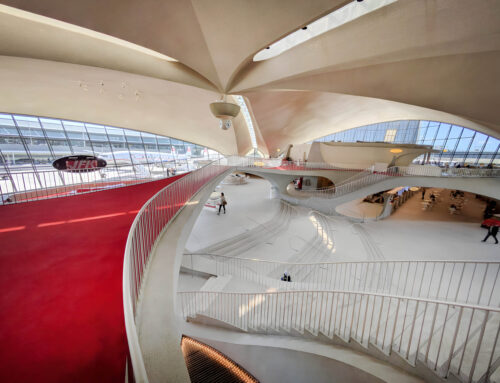By Susan Trumpbour
Artwork by Isabella Aranda-Garcia
Fashion isn’t just about the fabric; it’s about the design. Some pieces might express an adventure filled with thrills of daring patterns and bold colors, while other pieces might convey the occasional “What was I thinking?” moment. Before we even speak, our clothes tell a story. Joseph Abboud, a legend in men’s fashion for over three decades, shares, “I never want your suit to walk into the room before you do.”
Clothes should first reflect who we are, how we feel, and how we want to be seen. That’s where the classic designs play a role. You probably have that go-to dress or perfectly tailored suit that transforms you into the best version of yourself. It’s a well-designed, well-made, dependable and empowering item worthy of being your fashion soulmate. Putting it on instantly creates a surge of confidence; when something feels right, you carry that positive energy into the world.
Beyond looking great, investing in well-designed classic clothing is also a step toward a more sustainable future, steering us away from the wastefulness of fast fashion (trendy, inexpensive clothing purchased frequently and discarded quickly). According to Earth.org, fashion (and its supply chain) is the third largest polluting industry, after food and construction. But timeless fashion elevates our personal style, and well-made garments with classic designs are an investment in yourself and a more sustainable future.
What is classic design?
“Classic clothing” is one of those phrases that has several definitions. There are the classics—the white t-shirt, the button-down shirt, a black or navy blazer, black trousers, the little black dress, jeans—all designed (or tailored) to fit you perfectly. Then there are the “classics for you,” which refers to your own personal style or “uniform.”
“The classics are far from boring; they’re where new ideas are born,” says Abboud. “My new collection draws inspiration from my personal archives during the 1980s and 90s. History is such an important foundation for new ideas.”
Isa Kriegeskotte, owner and founder of Isa Tailored & Made in Bedford Hills, knows a great deal about personal style and good design, as she spent the past two decades tailoring and creating custom looks for celebrities. But her personal lineup consists of a comfortable Oxford tailored shirt, jeans she loves and some trusty cowboy boots. “Keeping it simple is key,” shares Kriegeskotte. “I love my brown cowboy boots; they go with everything. You can trek through the desert, walk the streets of Paris or even wear them with a gown—super-duper versatile. Keeping it simple is essential for me, but accessorizing is where the fun happens. Some days, I’ll throw on a handful of jewelry that has sentimental value and a great watch, while other days, I’ll do much less.”
But no matter how you define it, building a wardrobe filled with essentials, preferably in high-quality materials, means you’re curating a collection of styles and designs that stand the test of time. “My design philosophy is to stay away from the extremes and choose a happy medium,” Abboud says. “By keeping it classic, my customers avoid being a fashion victim.”
Everything old is new again
Classic clothing isn’t just a throwback; it’s a vibe that connects us all. A well-designed piece speaks a universal language, making it relevant to every era. It can unite people, even across age gaps, especially as the timeless mantra, “I remember when that was in style,” passes from one generation to the next.
Coco Chanel famously said, “Fashion changes, but style endures,” emphasizing the staying power of iconic pieces like the Chanel jacket or the little black dress, which will likely outlive us all. The magic lies in the design, as its classic style allows it to be repeatedly reinvented and cherished for years to come. “The navy blazer is a go-to example of classicism,” Abboud explains. “It traces back to military uniforms of the 1700s and 1800s. I’ve updated it for today’s men, honoring its roots.” He refreshed this classic blazer using a softer fabric, still in navy, and swapped out the traditional gold buttons for horn ones. “These simple design tweaks,” Abboud continues, “make a classic feel modern again.”
While fashion headlines might tell you the tailored suit is back, truthfully, it’s just basking in the spotlight again, as most classic pieces do, making itself known as a trusted trend. Refined, well-tailored clothing became a hallmark of good design during the 18th and 19th centuries, when, according to The Metropolitan Museum of Art, the modern, fitted suit came into fashion. Kriegeskotte has built her brand on bespoke tailoring. Her detailed work showcases how tailoring a store-bought garment to your specific shape can transform your appearance. “Fit is everything,” she says. “You can take an affordable suit, have it tailored to you, and instantly elevate it from ordinary on you to extraordinary.”
Thoughtful design is an art
Creative people are attuned to shapes, textures and colors, which fuel their ideas. Abboud is deeply influenced by art, often visiting museums to recharge his creativity. “The half-tones in John Singleton Copley’s famous painting ‘Watson and the Shark’ have always been a source of inspiration,” he says. “The complexity and intricate layering of tone-on-tone shades in this artwork inspire my general color philosophy for all my collections.”
However, captivating colors and a striking style aren’t enough—when it comes to fashion, good design must also meet the demands of everyday wear. “What I don’t like is design without discipline,” asserts Abboud. When serving as a guest lecturer at the Fashion Institute of Technology and Parsons School of Design, Abboud encourages students to understand the distinction between artistic freedom and purposeful design. “If you want to be an artist, paint on a canvas. If you want to be a designer, you have to connect with your consumer,” he emphasizes.
Abboud prides himself on finding a way to blend tradition into modern designs so they resonate with consumers and express their own personality, ultimately leading them to buy his pieces.
Both Abboud and Kriegeskotte emphasize the importance of drawing inspiration from their clients. In fact, Kriegeskotte’s client’s fashion struggles led her to introduce a new addition to her business. “Many contemporary pieces overlook practicality; clothing lacks linings or comes in very sheer fabrics, making them challenging to wear,” she explains. “So I recently created an undergarment line to solve this fashion dilemma, bringing back the classic slip and camisole with a sense of newness and purpose.”
Lightweight and made from 100 percent silk, her pieces blend practicality with elegance, redefining wardrobe essentials. Many of Kriegeskotte’s clients have fallen in love with the elegance of her new line and decided that great design should be seen. Now, they’re doubling up on her black slips to wear them as a chic dress or pairing her camisoles with a tailored blazer and jeans to add a soft, feminine touch. Kriegeskotte, who works by appointment only, says she often creates custom pieces in the client’s color and fabric of choice.
Classic pieces always tell a story
The finest fabrics—cotton, leather, cashmere, linen, wool and silk—have a rich history and naturally lend a timeless quality to a classic. “I love the history of things,” shares Abboud. “I appreciate the emotional connection a fabric or silhouette can evoke.” The tactile qualities bring them to life, linking us to a moment in time, like the first cashmere scarf you received as a gift, the touch of your mom’s silk blouse when you were young, or the cozy feel of your partner’s sweater when you hug them.
Abboud reminisces about one of his all-time favorite classic pieces: a brown leather jacket he purchased in 1971 that’s in the style of a traditional Levi’s denim jacket. He describes the rich, deep whisky and cognac color, buttery-soft texture and faded wear at the elbows and shoulders so vividly you would think it was hanging right in front of him. “It still has the label attached,” he laughs. It’s so special, in fact, that Abboud can tell you exactly where he was—in Paris—and how he couldn’t resist using the money his parents gave him to purchase schoolbooks to buy this jacket instead. (Don’t worry, he did eventually pay for his schoolbooks after putting in additional hours as an English tutor.) And yes, this beloved jacket is still in his closet, and it’s now also adored—and sometimes borrowed—by his adult daughter.
These types of classics possess a lasting charm and set the stage for self-expression. Mixing unique items with timeless pieces is a great way to add your own personal touch and spruce up your outfits. “I enjoy traveling and finding a unique hat or a quirky accessory to make classic pieces in my wardrobe reflect my personality,” Kriegeskotte explains. “Besides adding a nice touch to an outfit, they bring back memories of places I’ve visited, conjuring up sentimental snapshots from my travels. It creates a deeper connection to the outfit I am wearing.”
Even the ecosystem deserves a refresh
“I love that we repurpose our clothes,” says Abboud. “I see so many young people vintage shopping and antiquing.” Giving beloved clothing a second life, whether your own or inherited, also preserves its story. Abboud believes this trend helps people create a truly personal style while also caring for the environment. Fast fashion has grown tremendously in the past 15 years, with these brands producing twice the amount of clothes today than they did in 2000, according to Earth.org. Today, the fashion industry is the third largest pollutant, after food and construction, and fast fashion creates up to eight percent of global greenhouse gas emissions (the equivalent of 86 million Olympic-sized swimming pools) annually.
This doesn’t mean you shouldn’t buy new clothing. Instead, make conscious decisions about what new items you purchase. For example, you could choose well-designed and/or custom-made pieces you’ll keep for years, therefore reducing your clothing carbon footprint. “When I design pieces for a client, it’s usually a one-off, so I feel I have less waste,” Kriegeskotte explains. “And I believe in taking care of my clothes.”
She says clothing lasts longer if you hand-wash or use the delicate cycle. “Most people think it’s the water temperature that ruins your clothes, but it’s actually the spin cycle,” she explains. She also recommends inspecting your clothing to make sure it’s clean before you put it away. Stains and scents attract bugs. “You are investing in these pieces with a long-term commitment in mind; their longevity outweighs purchasing a similar inexpensive item,” she explains.
Celebrate the classics
Nothing says I have my life together quite like curating a wardrobe filled with high-quality classic designs. You can take pride in those splurges, as they’ll see you through good times and not-so-great ones. And as you build a beautifully designed wardrobe, we give you permission to add a few trendy pieces that may seem a bit out there, even if you end up laughing at them only a few months later. Because who says you can’t be fabulous and a little daring? It’s what keeps design, and life, in balance.
This article was published in the November/December 2025 edition of Connect to Northern Westchester.









